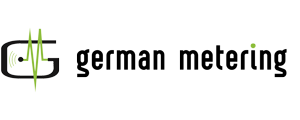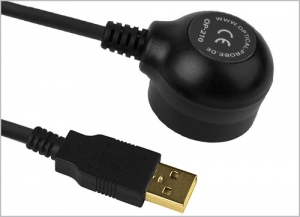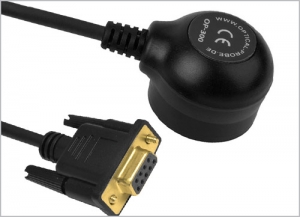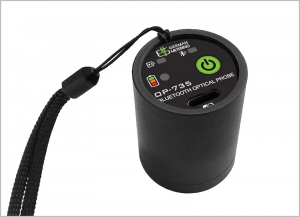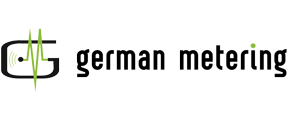How optical probes work
An optical probe is a device that can be connected to equipment, such as electricity meters, and transmit data through an optical port. The optical port is used in meters for isolated communication. The optical probe consists of an infrared transmitter and an infrared receiver; when the optical probe is placed on the optical port, data is transferred by converting electrical signals to infrared light and vice versa.

When reading electricity meters, optical probes are connected to the meter reading device through the interface cable or Bluetooth, and in this way receive the required data from the meter and, if necessary, send settings such as date and time to the meter. In order to maintain the security of the optical port in the meters, special protocols are used and in addition, each meter has its own password depending on the manufacturer.
Optical probes can be more complex devices used in various scientific and industrial applications to measure various properties of substances such as dissolved oxygen levels, pH, and other chemical concentrations. They work on the principle of light interacting with materials to provide valuable information about the sample being analyzed.
Advantages of Optical Probes
- No physical connection: Transfer data without physically connecting to equipment.
- Non-invasive: Measurements can be made without altering the sample.
- High precision: Provides accurate readings even in low concentration samples.
- Versatility: Can be used in a variety of environments and sample types.
- Durability: Many optical probes are designed to withstand harsh conditions.
Typical Applications
Optical probes are versatile and can be used in a wide range of applications:
- Industrial: Read gauges through an optical port.
- Environmental monitoring: Measure dissolved oxygen in water.
- Biotechnology: Monitoring cell cultures in bioreactors.
- Pharmaceuticals: Ensuring product quality through precise measurements.
- Food and beverage: Verify product consistency and safety.
Optical Probes and Energy Management
Optical probes play an important role in the energy management industry, especially in the monitoring and reading of electricity meters. Using optical probes, utility companies can accurately read electricity meters, which increases the speed of meter reading and eliminates human error, saving time and eliminating errors associated with manual meter reading.
Optical probes connect to electricity meters using a system that’s compatible with the IEC 62056-21 standard, a protocol for electronic meter reading. Here’s a simplified explanation of how they work:
- Physical contact: The optical probe typically has a magnetic head that attaches to the face of the meter where the optical port is located. This port is usually marked and designed to align with the probe for a secure connection.
- Data Transmission: Once attached, the probe uses infrared optical waves to communicate with the meter. It sends a signal to the meter, which then sends back meter reading data in the form of light pulses.
- Interpreting Data: The probe receives these light pulses and converts them into an electrical signal. This signal is then transmitted to a device, such as a laptop, handheld terminal, tablet, or smartphone, where specialized software interprets the data and displays the meter reading.
- Security: To protect data transmission, some systems use a challenge-response algorithm for authentication. This ensures that only authorized devices can access the data and helps prevent tampering or unauthorized access.
The use of optical probes to read electricity meters enables fast, accurate and secure data collection, which is essential for efficient energy management and billing processes.
German Metering has the Solution!
One of the German Metering’s optical probes, The OP-740 has a Bluetooth connection interface, which is suitable for tablets and mobile phones and all android devices with Bluetooth connection availability. It also includes an Android library file for programmers and developers. By implementing this library file in the meter reading application, programmers will be able to easily establish a connection between the Bluetooth optical probe and their application. OP-740 benefits from a very strong magnet that firmly attaches the optical probe to the meter and is also resistant to external light influences other than the infrared wavelength.
Using Optical Probes to Read Meters
Optical Probe is an interface that communicates via infrared waves with a peripheral device such as an electricity meter, water meter, heat meter, gas meter or any other device that has an optical port on it. All devices that support the European standard IEC62056-21 (IEC 1107) Mode E & C and IEC62056-31 will work with it. In addition, it has the ability to send settings for data transmission with all types of IEC meters in transparent mode.
Meter Reader Android Application
Metis is an android application capable of collecting data from various meter models and types and is used by meter readers or field operators to collect and configure target energy meters in the power grid network.
Metis utilizes android system and brings user friendly environment with powerful core features, enabling meter readers to collect and configure meters fast and efficient. Metis also supports digital data collection other than manual data entry for customers and meters. Being able to communicate with both wired and wireless optical probes, Metis can collect data from meter automatically thus eliminating human error and adding many capabilities like meter configurations to the business.
